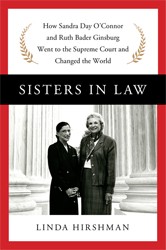The Neighborhood Playhouse on New York’s Lower East Side played an important role in the development of theatre during the second and third decades of the 20th century. John P. Harrington’s wellresearched account of its beginnings and development help to explain the rise of social-action and avant-garde theatre in New York and other cultural environs.
The Playhouse had been preceded by another center of social and cultural events which attracted the masses of immigrants on the Lower East Side, namely, The Henry Street Settlement, originally established by the Jewish millionaire Leonard Lewisohn in 1902. Under the guidance of his daughters, Alice and Irene Lewisohn, as well as the social activist Lillian Wald, it served as a beacon of light for programs, classes, and cultural activities that would appeal to the new citizens of New York.
When the Neighborhood Playhouse opened its doors in 1915, two more women were added to the production staff, Agnes Morgan and Helen Arthur. The author details how, in the following twelve years of its history, these women managed to attract some of the outstanding playwrights, actors, and even theatre companies of that period to stage challenging, offbeat theatrical productions at very little cost to the public.
The constant recitation of details, names, and activities associated with the events of those years lends a certain density to reading this book, but for anyone interested in the development of theatre in New York it is a valuable source of information.




